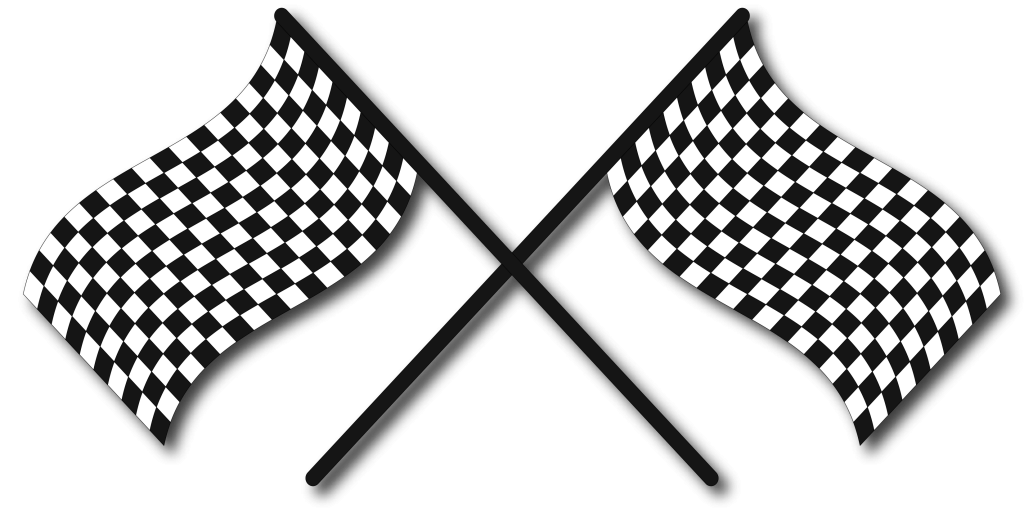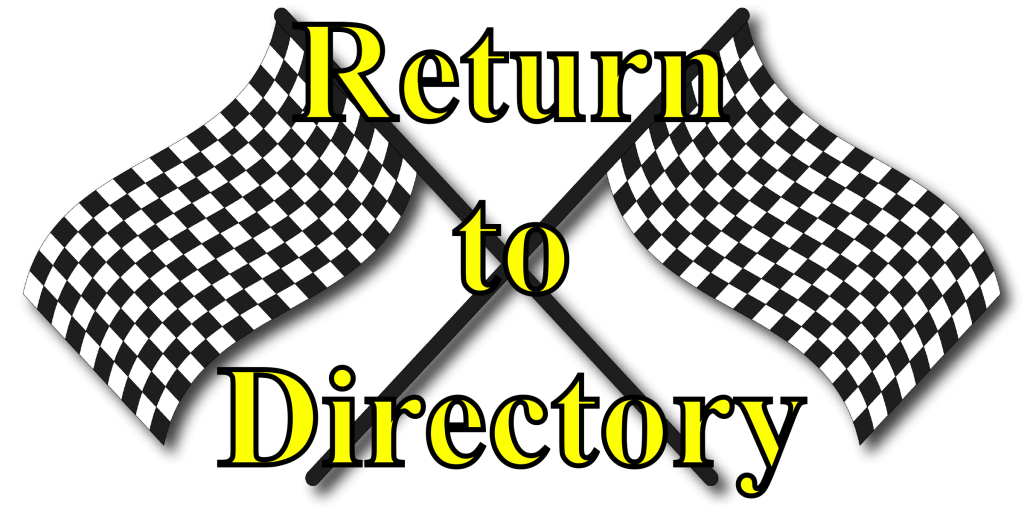
Nuts and Bolts
June 2013
No long boring stories in this one, just a collection of things I’ve seen related to racing over the years… So, lets go back to about 1954, we are going racing, could be dirt, could be asphalt, unless you had a midget or a half miler (predecessor of the Sprint Car) they were all Stock Cars.
The hot set up for towing your car around was a proper tow bar, the rich teams had drag chains. I can remember just pushing the race car up to the bumper of the tow car and wrapping the chain round and round , then using a coat hanger wire on the end of the chain to keep it from coming undone. Back then, trying to get the drivers to use a trailer was just like the problems of trying to get the single seat racers to use a roll bar or a full cage. I was one of those that hated trailers, you had to drive differently and we hadn’t yet learned how to load the weight properly.
One night at Ancaster I was watching Murray Stricker from St. Catherines getting ready to go home after the races. A lot of drivers just threw tools, tires and spare parts in the race car. Not Murray, he put a piece of wood, about 2×2 and 4 feet long with a nail through it about half way, a hub cap with a hole in it for the nail and a handful of hangers (no duct tape back then). Another person standing ther asked him, “What is all that stuff for”. Murray answered, “if I break an axel, I put on a stock tire and wheel, then the hub cap, followed by the stick with the nail into the hole in the hub cap, then I use the coat hangers to hold the ends of the stick to the running board and rear bumper, this would hold the wheel and axel in place till I get home”. Some that worked at a garage or a service station would get lucky if there was a tow truck they could use. Jimmy Wilson used to use a dump truck for his trips from Springfield Ontario to the CNE and back as his sponsor was Watter Brothers Construction.
The flat head Ford [I still love ’em] had a habit of heating up, so larger rads were put on. That’s why most pictures of the old coupes looked like the frames were bent at the cowl, no, just a taller rad which raised the hood by two or three inches at the front. Some even tried two radiators, or one up front and one in the trunk. An easy fix that was found was to make sure the rad was clean, yes we finally realized that $5.00 at the local rad shop was a good investment. Then we would take out the water pumps, cut off every other blade and when we put the rad back in we would make sure that it was not strait up and down, we would tip it back 3 – 5 degrees so the fresh cool air did not just go flowing through but actually cooled the fins and the slower flow of water actually stayed in the rad with cooler water going into the engine. A trick we found out [the hard way] with 6 cylindar Chrysler engines was to drill two holes through the motormount and bracket, still using the rubber, but now when you hit something the engine didn’t tear the rubber apart and push the fan into the rad. I have seen some rads that had copper tubes bent into circles of different sizes and brazed to the rad so if a hit did occur, the fan would ride on the circles instead of chewing into the rad.
Playing music got me to many other tracks as many raced on Sunday and we didn’t play on Sundays. One time in Kirkland Lake we went to a small track behind a Drive-In Theatre, it was about 1/6 of a mile, 13 cars and tow vehicles on the infield, they had no regular starter so whoever wasn’t driving or working on a car would walk over and flag that race. But, the most amazing thing was the announcer, he had his clip board and microphone with a long cord and a step ladder [this was a dirt track with no outside wall or fence] and he set the ladder up on the berm in turn 1 and sat on top of the ladder to perform the announcing for the day. He survived that day but who knows about the rest of the year.
Again, at another track behind a drive-in Theatre in Sudbury, and a common thing with low car counts, but, acceptable in most of these areas. This track had decided to have a Demo Derby after the stock car races, but only one car showed, the driver asked if he could race and he was told he could start at the back of the main if no other cars showed up for the Demo Derby. Well, they come out for the main and at the back was the ’58 Pontiac Demo Car. I thought the poor fella’s going to get lapped in about 5 laps, as we had never seen before, we did not know that by feature time the track broke up worse than anything I had ever seen. The Stock Cars were all pretty decent well built race cars, but on this day, the track won. The cars had worked through the surface and below was the slag from the mines in the area, so some cars were plowing this stuff while tearing up oil pans, suspension parts and putting fans through radiators. At the checker the only car running was the ’58 two tone green Pontiac with the trunk lid flopping up and down, with the driver getting a great thank you from the fans.
The track in Hearst Fairgrounds (1/2 mile) also had one interesting rule. The local fellas would work all winter rebuilding last years cars or new ones, they would start off with 25 – 30 cars, but one rule that no matter when it happened, when the car count got down to 13 cars, whether it be June, July, or September, that would be the end of the season so I suppose the fans got to see the season end championship race earlier than expected.
At Dryden, oh yes, way up there, anice but different rule, there was a yellow and I asked, Why? Answer; if someone has a flat, they throw the yellow so the driver can come in, change the tire and get back at it. There was a space between the pits and the track where this could be done. All crews would go to this area with a wheel wrench, jack and tires. If memory serves me correct, they were allowed three laps to complete the change. In some parts of racing you have to do what you have to do.
Getting back to Ancaster [get used to it] if a car went over the end in turn three, (a 40 foot drop) the driver had 30 seconds to get out crawl up the hill and stand on the edge of the track to wave his arms that he was ok. If not, they would then bring out the yellow and go find him and his car. I don’t think I ever saw anybody climb the bank and wave, they usually just drove around and came back on at turn #4. Other than Cayuga, I really don’t think I have seen any racing faster in Ontario short track racing than I saw at Ancaster. The fast groove was probably 5/8 of a mile, the program always said 3/4 at the top. What it really was, was a true 1/2 mile on the inside, they went very fast. I am not making this up.
At Flamboro one night the column shifter on my ’40 Chevy broke and I was stuck in second, at the time they were allowing cars from other tracks to run. Bridgeport was gone, we had been running Speedway Park in Stoney Creek and the CNE. So, one of the pit staff see’s me pull up to my tow car, get out and push the car into my area. so now I have to answer a bunch of questions about rules. I’m told that I couldn’t run as the rule book says you must have a stock transmission in working order. I said, “Ok, I’ll go home”. Then I made the mistake of asking why the car beside me was allowed to run as it had two obvious rule infractions; 1, offset wide rims, 2, the body, a ’34 Ford five window coupe was channeled about 4 inches? Yup… I got kicked out of another track and told never to come back.
So, I started this article talking about going racing in the mid ’50s. It’s amazing how things were a big problem back then, yet now a days, they just go out and get what they think they need. We won some races, and had a lot of very good times as we were mostly in the Jalopy, Street Stock, or Mini Stock division. This showed that we did not have a lot of money to throw around. For the first 15 years I never did install stuff like new king pins, tie rod ends and I never had expensive engines, so I didn’t need $5,000 brakes on a $200 car at the end of each straight-away.
When we were flat towing we used DOT tires, of course a big one on the right side and a wee one on the left side. We used the same set up on Dirt or Asphalt so we never had to change them. The cars always pulled a bit to the right during towing. If we had the same size tires on the front, combined with bad king pins, tie rod ends and the rest of the stuff that you have when you head out to a track wondering if there is going to be tow money or what does last place pay? …well, we just learned to do it and have fun.
Now, if this imaginary racing trip is going to Bridgeport and you are coming from the East and are going through Preston in Cambridge, remember that just before you turn right off of #8 Hwy to go to Breslau, you have to stop, let someone get in the race car, fire it up to get up the big hill out of Preston…

